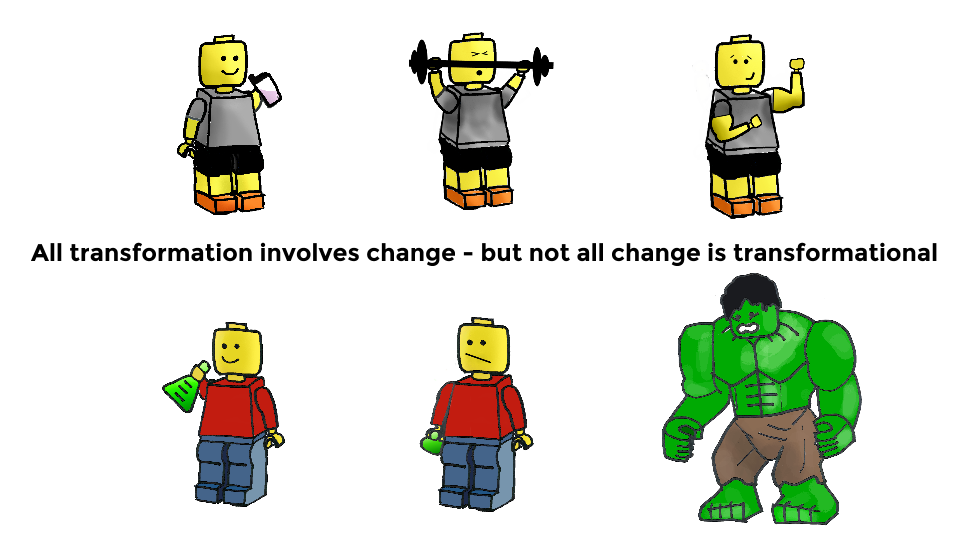
Digital transformation to me is about the transformation of organisations from silos, outsourced capability and murky strategic goals, to being an organisation that understands the vision, that knows where it delivers the most value and how to focus on it – Michael Brunton-Spall
Right now – if my backchannel Twitter conversations are to be believed – there are more people working on transformation programmes than doing any actual work.
Transformation is a nebulous term that no normal person would ever use in conversation.
I have a mistrust of anything claiming to be transformational for a few reasons:
- Most transformational change fails – focussing on systems and structure charts rather than people
- The networked era is less about time-limited change programmes and more about organisational speed-learning and living life in a perpetual beta
- And if you step behind the rhetoric of transformation you’ll see it is usually about reinforcing existing business models rather than truly challenging them
Simply put – are we clear what the drivers of transformation are and what it is we are trying to transform into?
I’ve found it useful to create design principles for us to adopt as we think about or implement change.
There are eight principles in all and they underpin how we intend to exist – a demarcation between managing the present and inventing the future.
Having a clearly articulated and understood set of principles should help us do the following:
- Get us all on the same page – or surface principles that we are unclear on and need further debate.
- Avoid silos – as everyone is working to the same set of overarching principles.
- Help us evaluate proposed work – as deviating from the principles is not acceptable, although they might develop over time.
- Establish the use of the principles as “business as usual” for the way we deliver change.
Here they are:
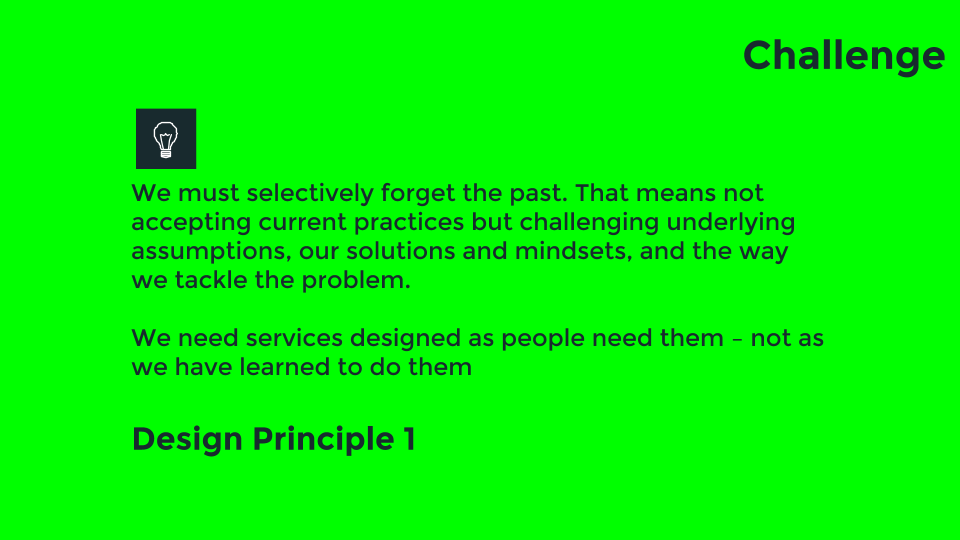
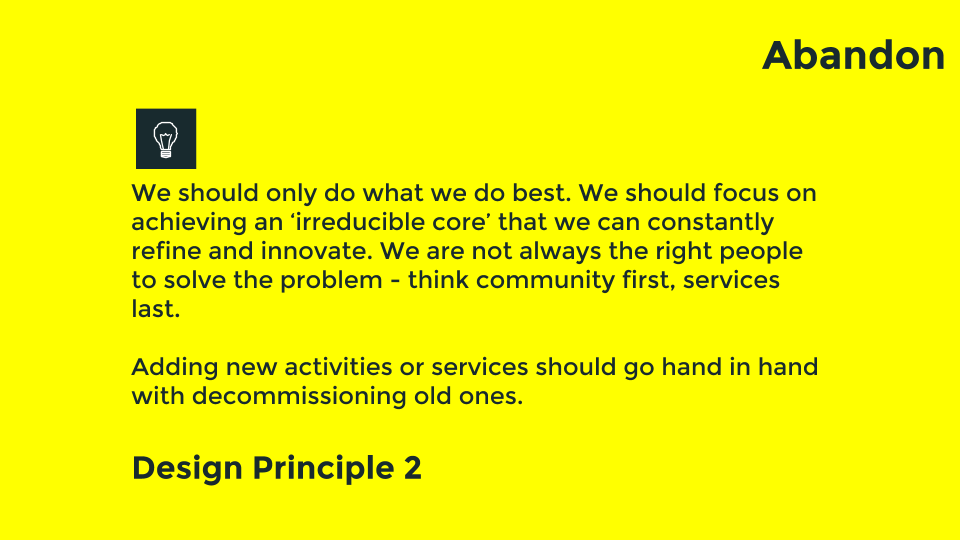
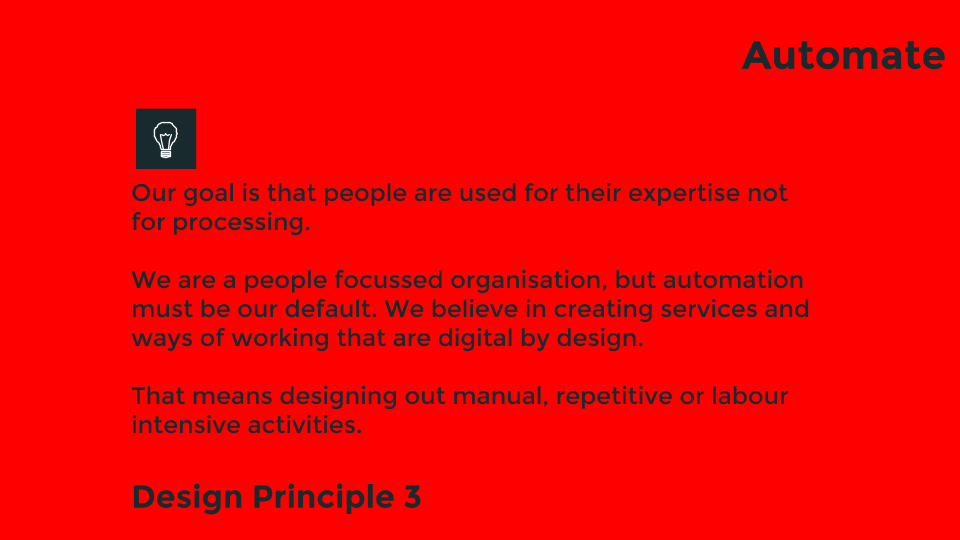
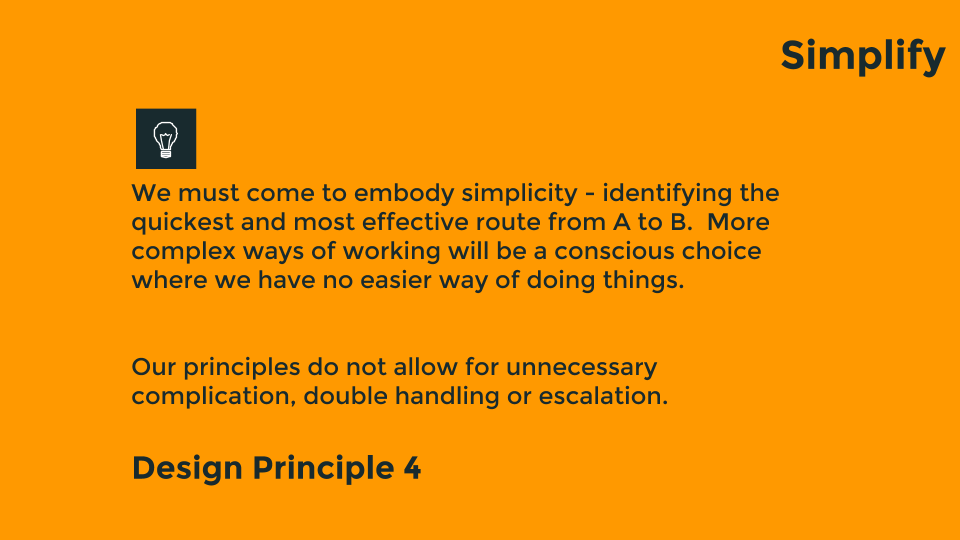
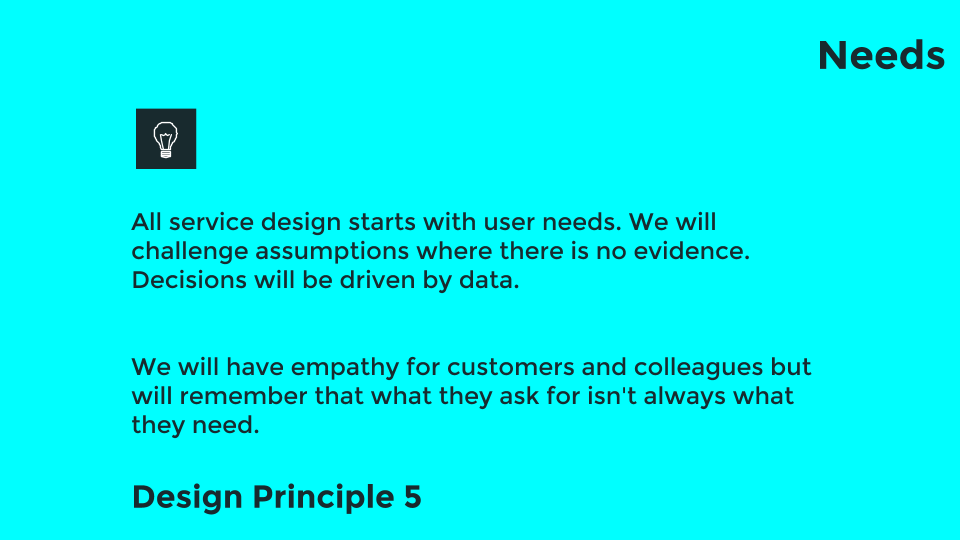
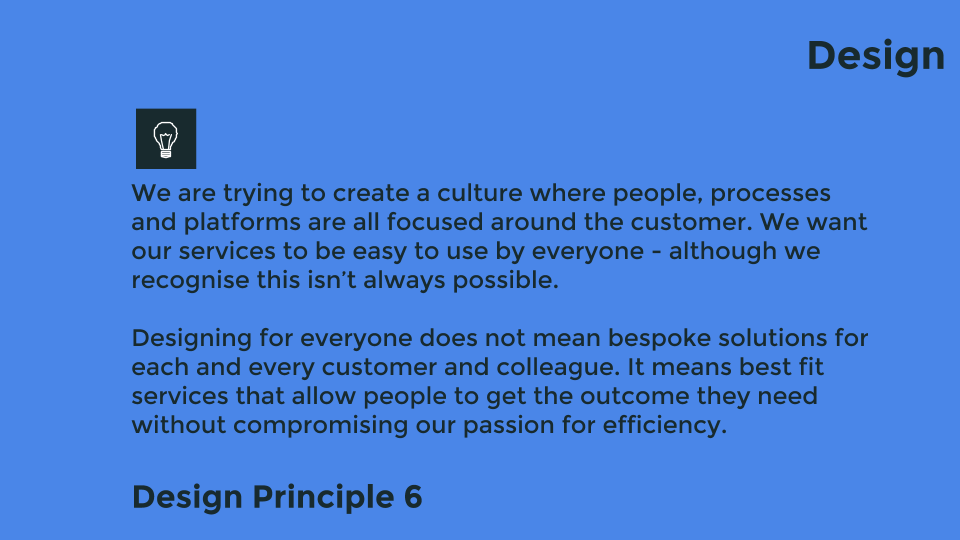
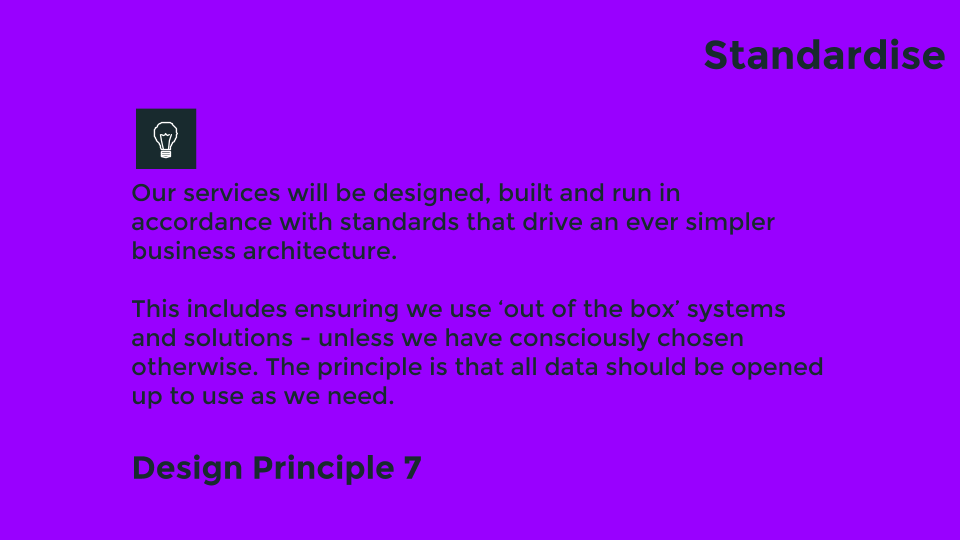
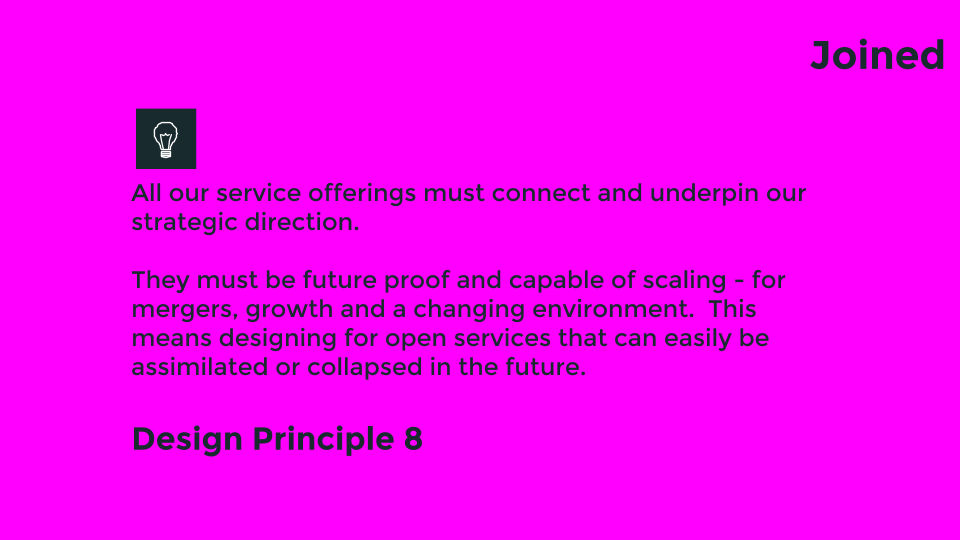
By embedding design principles we hope to better articulate what transformation could and should feel like. Turning it from organisational junk language into something that people can apply to their everyday work.
We’ll let you know how we get on and how the principles develop.
Credit where it’s due: The principles are not original and have been heavily influenced and in part directly lifted from GDS team, Carl Haggarty, Vijay Govindarajan and many others. If I’ve failed to credit you and you spot a phrase I swiped, let me know!
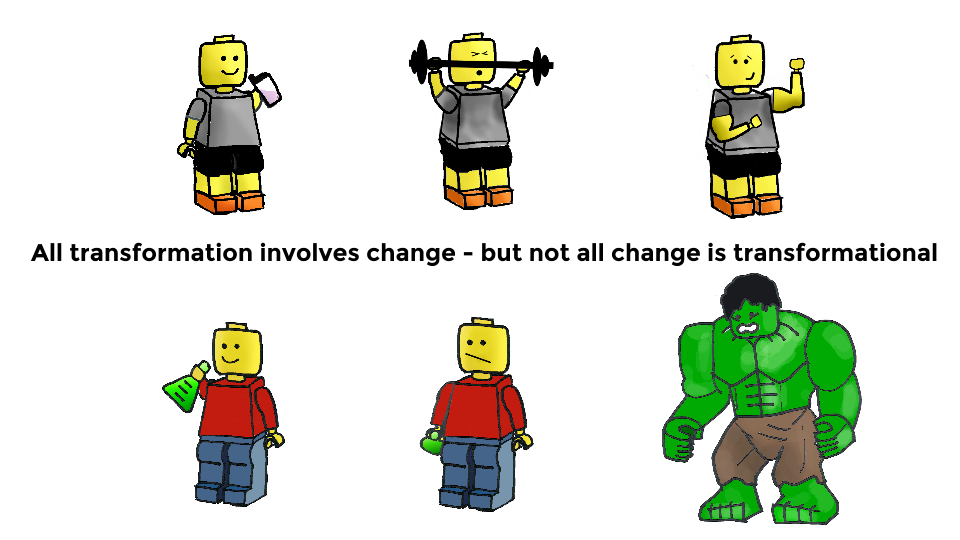
Leave a comment